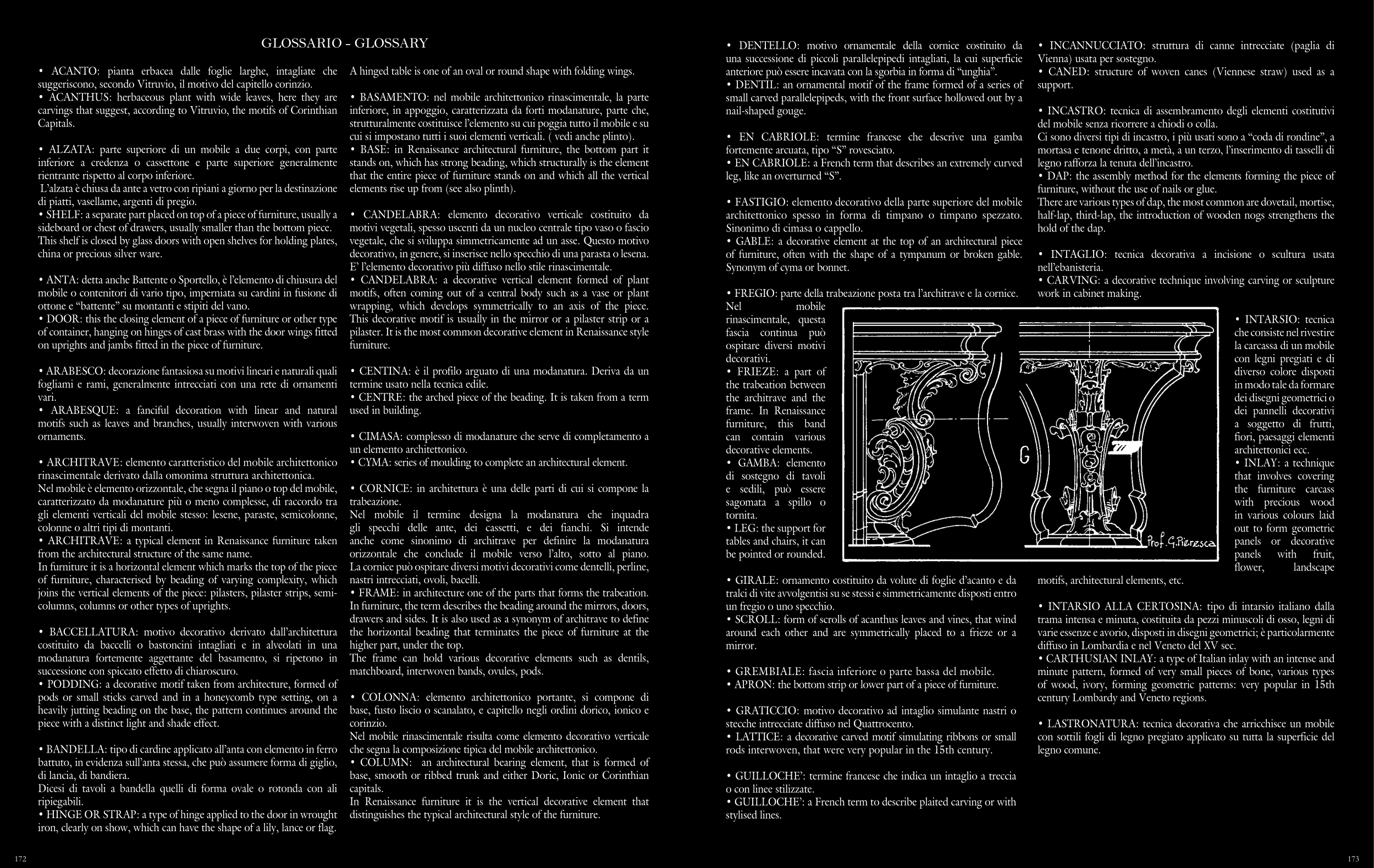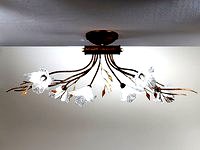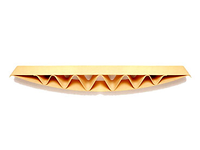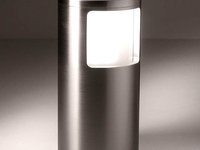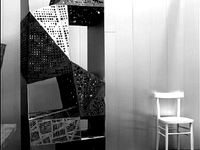• DENTELLO: motivo ornamentale della cornice costituito da
una successione di piccoli parallelepipedi intagliati, la cui superficie
anteriore può essere incavata con la sgorbia in forma di “unghia”.
• DENTIL: an ornamental motif of the frame formed of a series of
small carved parallelepipeds, with the front surface hollowed out by a
nail-shaped gouge.
• EN CABRIOLE: termine francese che descrive una gamba
fortemente arcuata, tipo “S” rovesciato.
• EN CABRIOLE: a French term that describes an extremely curved
leg, like an overturned “S”.
• FASTIGIO: elemento decorativo della parte superiore del mobile
architettonico spesso in forma di timpano o timpano spezzato.
Sinonimo di cimasa o cappello.
• GABLE: a decorative element at the top of an architectural piece
of furniture, often with the shape of a tympanum or broken gable.
Synonym of cyma or bonnet.
• FREGIO: parte della trabeazione posta tra l’architrave e la cornice.
Nel
mobile
rinascimentale, questa
fascia continua può
ospitare diversi motivi
decorativi.
• FRIEZE: a part of
the trabeation between
the architrave and the
frame. In Renaissance
furniture, this band
can contain various
decorative elements.
• GAMBA: elemento
di sostegno di tavoli
e sedili, può essere
sagomata a spillo o
tornita.
• LEG: the support for
tables and chairs, it can
be pointed or rounded.
• GIRALE: ornamento costituito da volute di foglie d’acanto e da
tralci di vite avvolgentisi su se stessi e simmetricamente disposti entro
un fregio o uno specchio.
• SCROLL: form of scrolls of acanthus leaves and vines, that wind
around each other and are symmetrically placed to a frieze or a
mirror.
• GREMBIALE: fascia inferiore o parte bassa del mobile.
• APRON: the bottom strip or lower part of a piece of furniture.
• GRATICCIO: motivo decorativo ad intaglio simulante nastri o
stecche intrecciate diffuso nel Quattrocento.
• LATTICE: a decorative carved motif simulating ribbons or small
rods interwoven, that were very popular in the 15th century.
• GUILLOCHE’: termine francese che indica un intaglio a treccia
o con linee stilizzate.
• GUILLOCHE’: a French term to describe plaited carving or with
stylised lines.
• INCANNUCCIATO: struttura di canne intrecciate (paglia di
Vienna) usata per sostegno.
• CANED: structure of woven canes (Viennese straw) used as a
support.
• INCASTRO: tecnica di assembramento degli elementi costitutivi
del mobile senza ricorrere a chiodi o colla.
Ci sono diversi tipi di incastro, i più usati sono a “coda di rondine”, a
mortasa e tenone dritto, a metà, a un terzo, l’inserimento di tasselli di
legno rafforza la tenuta dell’incastro.
• DAP: the assembly method for the elements forming the piece of
furniture, without the use of nails or glue.
There are various types of dap, the most common are dovetail, mortise,
half-lap, third-lap, the introduction of wooden nogs strengthens the
hold of the dap.
• INTAGLIO: tecnica decorativa a incisione o scultura usata
nell’ebanisteria.
• CARVING: a decorative technique involving carving or sculpture
work in cabinet making.
• INTARSIO: tecnica
che consiste nel rivestire
la carcassa di un mobile
con legni pregiati e di
diverso colore disposti
in modo tale da formare
dei disegni geometrici o
dei pannelli decorativi
a soggetto di frutti,
fiori, paesaggi elementi
architettonici ecc.
• INLAY: a technique
that involves covering
the furniture carcass
with precious wood
in various colours laid
out to form geometric
panels or decorative
panels
with
fruit,
flower,
landscape
motifs, architectural elements, etc.
• INTARSIO ALLA CERTOSINA: tipo di intarsio italiano dalla
trama intensa e minuta, costituita da pezzi minuscoli di osso, legni di
varie essenze e avorio, disposti in disegni geometrici; è particolarmente
diffuso in Lombardia e nel Veneto del XV sec.
• CARTHUSIAN INLAY: a type of Italian inlay with an intense and
minute pattern, formed of very small pieces of bone, various types
of wood, ivory, forming geometric patterns: very popular in 15th
century Lombardy and Veneto regions.
• LASTRONATURA: tecnica decorativa che arricchisce un mobile
con sottili fogli di legno pregiato applicato su tutta la superficie del
legno comune.
• ACANTO: pianta erbacea dalle foglie larghe, intagliate che
suggeriscono, secondo Vitruvio, il motivo del capitello corinzio.
• ACANTHUS: herbaceous plant with wide leaves, here they are
carvings that suggest, according to Vitruvio, the motifs of Corinthian
Capitals.
• ALZATA: parte superiore di un mobile a due corpi, con parte
inferiore a credenza o cassettone e parte superiore generalmente
rientrante rispetto al corpo inferiore.
L’alzata è chiusa da ante a vetro con ripiani a giorno per la destinazione
di piatti, vasellame, argenti di pregio.
• SHELF: a separate part placed on top of a piece of furniture, usually a
sideboard or chest of drawers, usually smaller than the bottom piece.
This shelf is closed by glass doors with open shelves for holding plates,
china or precious silver ware.
• ANTA: detta anche Battente o Sportello, è l’elemento di chiusura del
mobile o contenitori di vario tipo, imperniata su cardini in fusione di
ottone e “battente” su montanti e stipiti del vano.
• DOOR: this the closing element of a piece of furniture or other type
of container, hanging on hinges of cast brass with the door wings fitted
on uprights and jambs fitted in the piece of furniture.
• ARABESCO: decorazione fantasiosa su motivi lineari e naturali quali
fogliami e rami, generalmente intrecciati con una rete di ornamenti
vari.
• ARABESQUE: a fanciful decoration with linear and natural
motifs such as leaves and branches, usually interwoven with various
ornaments.
• ARCHITRAVE: elemento caratteristico del mobile architettonico
rinascimentale derivato dalla omonima struttura architettonica.
Nel mobile è elemento orizzontale, che segna il piano o top del mobile,
caratterizzato da modanature più o meno complesse, di raccordo tra
gli elementi verticali del mobile stesso: lesene, paraste, semicolonne,
colonne o altri tipi di montanti.
• ARCHITRAVE: a typical element in Renaissance furniture taken
from the architectural structure of the same name.
In furniture it is a horizontal element which marks the top of the piece
of furniture, characterised by beading of varying complexity, which
joins the vertical elements of the piece: pilasters, pilaster strips, semi-
columns, columns or other types of uprights.
• BACCELLATURA: motivo decorativo derivato dall’architettura
costituito da baccelli o bastoncini intagliati e in alveolati in una
modanatura fortemente aggettante del basamento, si ripetono in
successione con spiccato effetto di chiaroscuro.
• PODDING: a decorative motif taken from architecture, formed of
pods or small sticks carved and in a honeycomb type setting, on a
heavily jutting beading on the base, the pattern continues around the
piece with a distinct light and shade effect.
• BANDELLA: tipo di cardine applicato all’anta con elemento in ferro
battuto, in evidenza sull’anta stessa, che può assumere forma di giglio,
di lancia, di bandiera.
Dicesi di tavoli a bandella quelli di forma ovale o rotonda con ali
ripiegabili.
• HINGE OR STRAP: a type of hinge applied to the door in wrought
iron, clearly on show, which can have the shape of a lily, lance or flag.
A hinged table is one of an oval or round shape with folding wings.
• BASAMENTO: nel mobile architettonico rinascimentale, la parte
inferiore, in appoggio, caratterizzata da forti modanature, parte che,
strutturalmente costituisce l’elemento su cui poggia tutto il mobile e su
cui si impostano tutti i suoi elementi verticali. ( vedi anche plinto).
• BASE: in Renaissance architectural furniture, the bottom part it
stands on, which has strong beading, which structurally is the element
that the entire piece of furniture stands on and which all the vertical
elements rise up from (see also plinth).
• CANDELABRA: elemento decorativo verticale costituito da
motivi vegetali, spesso uscenti da un nucleo centrale tipo vaso o fascio
vegetale, che si sviluppa simmetricamente ad un asse. Questo motivo
decorativo, in genere, si inserisce nello specchio di una parasta o lesena.
E’ l’elemento decorativo più diffuso nello stile rinascimentale.
• CANDELABRA: a decorative vertical element formed of plant
motifs, often coming out of a central body such as a vase or plant
wrapping, which develops symmetrically to an axis of the piece.
This decorative motif is usually in the mirror or a pilaster strip or a
pilaster. It is the most common decorative element in Renaissance style
furniture.
• CENTINA: è il profilo arguato di una modanatura. Deriva da un
termine usato nella tecnica edile.
• CENTRE: the arched piece of the beading. It is taken from a term
used in building.
• CIMASA: complesso di modanature che serve di completamento a
un elemento architettonico.
• CYMA: series of moulding to complete an architectural element.
• CORNICE: in architettura è una delle parti di cui si compone la
trabeazione.
Nel mobile il termine designa la modanatura che inquadra
gli specchi delle ante, dei cassetti, e dei fianchi. Si intende
anche come sinonimo di architrave per definire la modanatura
orizzontale che conclude il mobile verso l’alto, sotto al piano.
La cornice può ospitare diversi motivi decorativi come dentelli, perline,
nastri intrecciati, ovoli, bacelli.
• FRAME: in architecture one of the parts that forms the trabeation.
In furniture, the term describes the beading around the mirrors, doors,
drawers and sides. It is also used as a synonym of architrave to define
the horizontal beading that terminates the piece of furniture at the
higher part, under the top.
The frame can hold various decorative elements such as dentils,
matchboard, interwoven bands, ovules, pods.
• COLONNA: elemento architettonico portante, si compone di
base, fusto liscio o scanalato, e capitello negli ordini dorico, ionico e
corinzio.
Nel mobile rinascimentale risulta come elemento decorativo verticale
che segna la composizione tipica del mobile architettonico.
• COLUMN: an architectural bearing element, that is formed of
base, smooth or ribbed trunk and either Doric, Ionic or Corinthian
capitals.
In Renaissance furniture it is the vertical decorative element that
distinguishes the typical architectural style of the furniture.
GLOSSARIO - GLOSSARY
173
172


